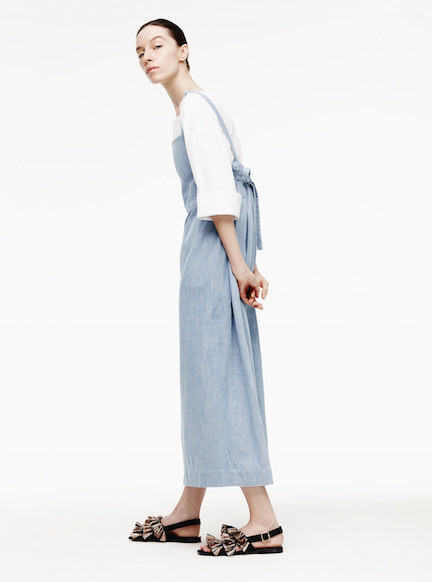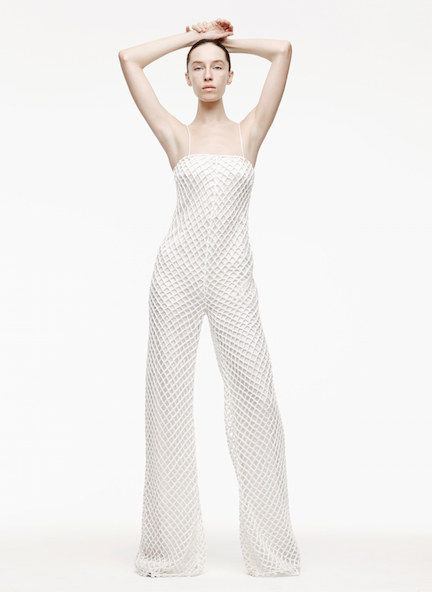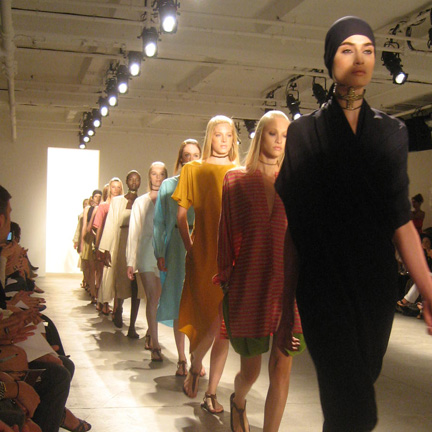Agnes Martin, 1965
Adam Lippes knows luxury. He learned it as the right hand to the late Oscar de la Renta and it is literally threaded throughout the hand-sewn finishings of his demi-couture clothes (which he is obliged to sell at ready-to-wear prices). But if in the past his collections have veered towards precious, or even haughty, Lippes has remedied that this season with an appeasement to womanly comforts that are as liberating as they are indulgent. It is the justly outcome when you take on sultry songstress Nina Simone and austere artist Agnes Martin as inspiration. Seemingly disparate, the two women share an utterly modern point-of-view and a resilient but quiet strength. Lippes has harnessed these qualities and has transmuted then into the rarest form of luxury in our modern day: humility.
It was the the righteous contradiction of humble luxury that erupted into one of Lippes’s best collections ever. Taking cues from the the monastic simplicity of Martin’s artist dress as well as Simone’s own sumptuous, though inconspicuously so, style, he presented a collection of quiet clothes that sang. They were quiet in their shapes: easy and unassuming, shapes that a woman could easily slip on, flatter her, and give her no further fuss as she goes about her day. And they sang in the details: the hand-stitched silk grossgrain placket on the back of a cotton tunic, stitched just so as to ensure the neck lays perfectly. They sang in the the multitudes of finely pleated cotton, cut in a peasant shape, as luxurious as any pastoral costume worn by Marie Antoinette on her faux farm. The height of modesty came in a bleached denim apron dress with an inventive and aesthetically delightful tie in the back. Its hem was bound, turned up and blind stitched by hand. It was nearly sinful in its decadent ease.
This season spoke to an emerging feminist philosophy which Lippes has made clear in his shoes for the collection. Flat sandals, designed for Manolo Blahnik, were ornamented with ruffled flounce and marked a new direction for his footwear and a significant shift in his design methodology “If you can’t wear it with flats,” Lippes stubbornly and endearingly declared, “we aren’t making it.”
But a Lippes collection is never whole without the flexing of his couture muscle. A jumpsuit, overlaid with a knotted silk cording came from a reference to Simone’s penchant for macramé. Uniform in appearance, not one of its perfectly formed squares are alike; each are subtlety altered in size and angle, through a process painstakingly executed by skilled hands, as to move flawlessly over the curves of a woman’s body. The reward of such intricate and time-consuming effort, not to mention cost, is perfection. The notes for the collection featured a quote by Agnes Martin: “Simplicity is never simple. It’s the hardest thing to achieve” and Lippes proved he knows this better than anyone else.
Nina Simone, 1965





























